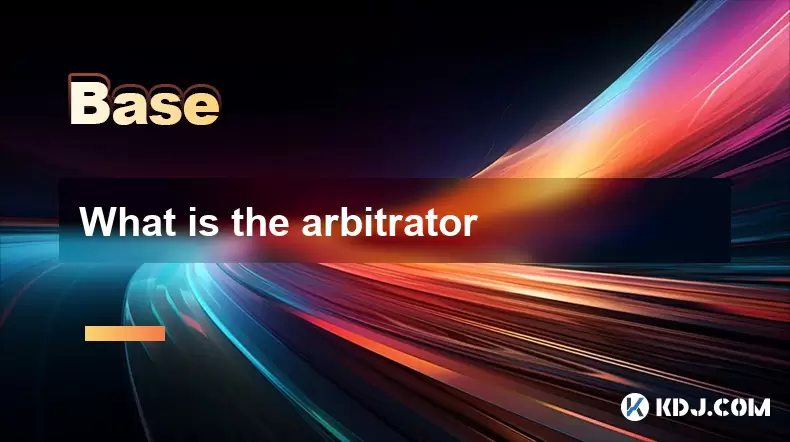-
 Bitcoin
Bitcoin $118,209.3536
1.16% -
 Ethereum
Ethereum $3,151.7546
5.98% -
 XRP
XRP $2.9277
2.35% -
 Tether USDt
Tether USDt $1.0000
0.00% -
 BNB
BNB $689.7099
1.26% -
 Solana
Solana $163.4270
1.91% -
 USDC
USDC $1.0000
0.02% -
 Dogecoin
Dogecoin $0.1983
3.74% -
 TRON
TRON $0.3008
0.51% -
 Cardano
Cardano $0.7435
2.86% -
 Hyperliquid
Hyperliquid $47.6547
-0.48% -
 Stellar
Stellar $0.4625
2.79% -
 Sui
Sui $3.9921
2.71% -
 Chainlink
Chainlink $16.0608
4.23% -
 Hedera
Hedera $0.2348
1.56% -
 Bitcoin Cash
Bitcoin Cash $496.6985
1.25% -
 Avalanche
Avalanche $21.9038
5.41% -
 UNUS SED LEO
UNUS SED LEO $8.8356
-1.88% -
 Shiba Inu
Shiba Inu $0.0...01364
5.31% -
 Toncoin
Toncoin $3.1102
4.35% -
 Litecoin
Litecoin $95.9756
3.59% -
 Polkadot
Polkadot $4.0925
5.78% -
 Monero
Monero $333.7622
-1.44% -
 Uniswap
Uniswap $9.1968
2.25% -
 Bitget Token
Bitget Token $4.6378
6.23% -
 Pepe
Pepe $0.0...01282
6.77% -
 Dai
Dai $1.0002
0.03% -
 Ethena USDe
Ethena USDe $1.0005
0.00% -
 Aave
Aave $329.9143
4.49% -
 Bittensor
Bittensor $441.4995
6.89%
What is the arbitrator
Arbitrum enhances Ethereum's scalability using optimistic rollups, reducing gas fees and speeding up transactions while maintaining security through fraud proofs.
Jul 14, 2025 at 06:00 pm

Understanding Arbitrum: A Layer 2 Scaling Solution
Arbitrum is a Layer 2 scaling solution designed to enhance the performance and reduce the costs of transactions on the Ethereum blockchain. It was developed by Offchain Labs with the goal of addressing one of Ethereum’s most pressing issues—high gas fees and slow transaction speeds. By processing transactions off-chain and then batching them into a single transaction on the main Ethereum chain, Arbitrum significantly improves scalability without compromising security.
One of the key features that sets Arbitrum apart from other Layer 2 solutions is its use of optimistic rollups. These allow for faster and cheaper transactions while maintaining the trustless nature of the Ethereum network. The term “optimistic” comes from the assumption that all transactions are valid unless proven otherwise, which minimizes computational overhead.
How Arbitrum Works: Optimistic Rollups Explained
At the core of Arbitrum's architecture lies the concept of optimistic rollups, a technology that bundles multiple transactions into one before submitting them to the Ethereum mainnet. This drastically reduces congestion and lowers gas fees. Here’s how it works:
- Transactions are executed off-chain within the Arbitrum network.
- The results of these transactions are then aggregated into a batch.
- A cryptographic proof (or assertion) is submitted to the Ethereum mainnet.
- If no disputes arise during a set challenge period, the batch is finalized.
The system relies on fraud proofs to ensure security. If any participant believes a transaction is invalid, they can submit a fraud proof to challenge it. This process ensures that even though transactions are processed off-chain, the integrity of the Ethereum network remains intact.
Benefits of Using Arbitrum for dApp Developers and Users
For developers and users alike, Arbitrum offers several compelling advantages:
- Lower transaction fees: Gas costs on Arbitrum are significantly lower than those on the Ethereum mainnet, making decentralized applications more accessible.
- Faster transaction finality: Since transactions are processed off-chain, confirmation times are much quicker.
- Ethereum compatibility: Arbitrum supports EVM (Ethereum Virtual Machine) compatibility, allowing developers to deploy existing smart contracts with minimal modifications.
- Security: By anchoring transaction data back to the Ethereum mainnet, Arbitrum retains the robust security guarantees of Ethereum.
These benefits make Arbitrum an attractive option for both developers seeking scalable infrastructure and users looking for cost-effective interactions with decentralized applications.
Deploying Smart Contracts on Arbitrum: Step-by-Step Guide
Developers who wish to deploy their smart contracts on Arbitrum can follow these steps:
- Ensure your development environment is set up with tools like Hardhat or Truffle.
- Install the Arbitrum plugin or update your configuration files to include Arbitrum network parameters.
- Compile your Solidity smart contract as usual.
- Deploy your contract using the Arbitrum RPC endpoint.
- Verify your contract on Block Explorer for Arbitrum (e.g., Arbiscan).
Each step requires careful attention to detail, especially when configuring network settings and selecting the correct RPC endpoints. Developers should also test their contracts thoroughly in a testnet environment before deploying them on the Arbitrum mainnet.
Interacting with Arbitrum: Wallet Setup and Transaction Execution
To interact with Arbitrum, users need to configure their wallets accordingly. Here’s how to do it:
- Open your preferred wallet (e.g., MetaMask).
- Navigate to the network settings.
- Add a custom RPC network with Arbitrum’s mainnet parameters:
- Network Name: Arbitrum One
- New RPC URL: https://arb1.arbitrum.io/rpc
- Chain ID: 42161
- Currency Symbol: ETH
- Block Explorer URL: https://arbiscan.io/
- Switch to the Arbitrum network and fund your wallet with ETH via a bridge.
Once configured, users can seamlessly interact with Arbitrum-based decentralized applications and send transactions at a fraction of the cost compared to the Ethereum mainnet.
Frequently Asked Questions (FAQs)
Q1: Is Arbitrum the same as Ethereum?
No, Arbitrum is a Layer 2 solution built on top of Ethereum. While it leverages Ethereum’s security, it processes transactions off-chain to improve speed and reduce costs.
Q2: Can I move assets between Ethereum and Arbitrum?
Yes, you can use bridges such as the official Arbitrum Bridge to transfer assets between Ethereum and Arbitrum. However, withdrawals may take some time due to the challenge period in optimistic rollups.
Q3: Do I need special tools to develop on Arbitrum?
While many Ethereum development tools support Arbitrum out of the box, you’ll need to configure them with Arbitrum-specific RPC endpoints and network IDs. No major code changes are required if your project is EVM-compatible.
Q4: What happens if someone tries to submit a fraudulent transaction on Arbitrum?
If a fraudulent transaction is submitted, anyone can challenge it by providing a fraud proof. The system will verify the claim and penalize malicious actors while ensuring the integrity of the network.
Disclaimer:info@kdj.com
The information provided is not trading advice. kdj.com does not assume any responsibility for any investments made based on the information provided in this article. Cryptocurrencies are highly volatile and it is highly recommended that you invest with caution after thorough research!
If you believe that the content used on this website infringes your copyright, please contact us immediately (info@kdj.com) and we will delete it promptly.
- Animal Memecoins Roar Back: HEGE, BONK, and the Solana Pack Lead the Charge
- 2025-07-16 20:50:13
- Pumpfun's PUMP Token: SOL Transfers, Buybacks, and the Wild West of Meme Coins
- 2025-07-16 20:30:13
- Trump, HTX, and USDT: Riding the Crypto Wave in 2025
- 2025-07-16 20:50:13
- SPX6900, Meme Coins, and the Quest for 1000x Gains: A New Yorker's Take
- 2025-07-16 20:30:13
- Eclipse Airdrop and Token Supply: Navigating the Crypto Landscape
- 2025-07-16 18:50:13
- Solana Price, Zebec Network, and Remittix: Decoding the Crypto Signals
- 2025-07-16 18:30:13
Related knowledge

What is the Bitcoin dominance index
Jul 12,2025 at 10:35pm
Understanding the Bitcoin Dominance IndexThe Bitcoin Dominance Index, often abbreviated as BTC.D, is a metric used to measure Bitcoin's market capital...

What is the Bitcoin dominance index
Jul 11,2025 at 04:29am
What is the Bitcoin Dominance Index?The Bitcoin Dominance Index is a metric used to gauge Bitcoin's market capitalization relative to the total market...

Can crypto be a hedge against inflation
Jul 14,2025 at 12:21am
Understanding the Concept of Hedging Against InflationInflation refers to the general increase in prices and fall in the purchasing value of money ove...

Can crypto be a hedge against inflation
Jul 12,2025 at 12:07pm
Understanding the Role of Blockchain in Decentralized Finance (DeFi)Blockchain technology serves as the backbone of decentralized finance, offering a ...

What are account abstraction wallets
Jul 13,2025 at 01:43am
Understanding the Concept of Account AbstractionAccount abstraction is a term frequently used in the Ethereum ecosystem, particularly within discussio...

What does "gas limit" vs "gas price" mean
Jul 13,2025 at 04:00am
Understanding the Basics of Gas in Blockchain TransactionsIn the Ethereum and other EVM-compatible blockchains, every transaction requires computation...

What is the Bitcoin dominance index
Jul 12,2025 at 10:35pm
Understanding the Bitcoin Dominance IndexThe Bitcoin Dominance Index, often abbreviated as BTC.D, is a metric used to measure Bitcoin's market capital...

What is the Bitcoin dominance index
Jul 11,2025 at 04:29am
What is the Bitcoin Dominance Index?The Bitcoin Dominance Index is a metric used to gauge Bitcoin's market capitalization relative to the total market...

Can crypto be a hedge against inflation
Jul 14,2025 at 12:21am
Understanding the Concept of Hedging Against InflationInflation refers to the general increase in prices and fall in the purchasing value of money ove...

Can crypto be a hedge against inflation
Jul 12,2025 at 12:07pm
Understanding the Role of Blockchain in Decentralized Finance (DeFi)Blockchain technology serves as the backbone of decentralized finance, offering a ...

What are account abstraction wallets
Jul 13,2025 at 01:43am
Understanding the Concept of Account AbstractionAccount abstraction is a term frequently used in the Ethereum ecosystem, particularly within discussio...

What does "gas limit" vs "gas price" mean
Jul 13,2025 at 04:00am
Understanding the Basics of Gas in Blockchain TransactionsIn the Ethereum and other EVM-compatible blockchains, every transaction requires computation...
See all articles

























































































